The first substantial white settlement in what is now Gadsden was a village called “Double Springs”.This was begun by a mixed American Indian and Caucasian settler named John Riley when he built his house near two springs in about 1825. His home became a stagecoach stop on the Huntsville-to-Rome Georgia route.
The home below was taken from its original site, near Lawrenceburg, Tennessee. Built by Tennessee pioneers around 1777, this building portrays the early mountain settlers way of life.
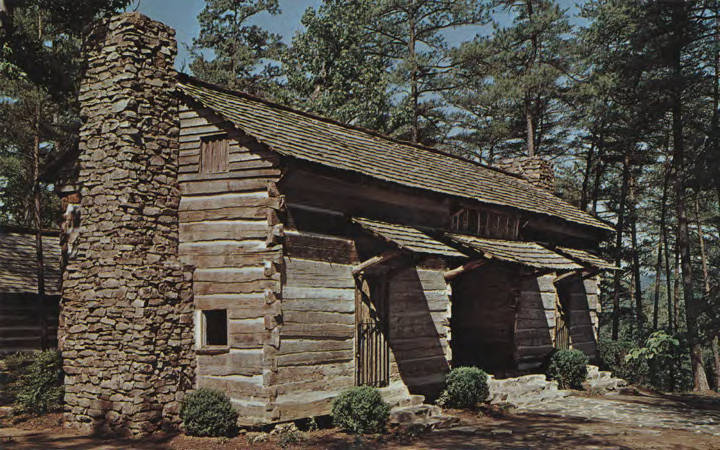 John Riley’s wife, Susannah Walker, was white and not Cherokee. John was the son of a white man, Samuel Riley and his Cherokee wife, Gu-lu-s-ti-yu daughter of Chief Doublehead. Riley died in the Cherokee Nation in Indian Territory about 1845. Susannah was still alive in 1851 and listed on the Drennen Roll with several of their children in Tahlequah District. She was still alive in 1857 when she received a US Bounty Land Warrant as a widow for her husbands service during the War of 1812 (1st Creek War).
John Riley’s wife, Susannah Walker, was white and not Cherokee. John was the son of a white man, Samuel Riley and his Cherokee wife, Gu-lu-s-ti-yu daughter of Chief Doublehead. Riley died in the Cherokee Nation in Indian Territory about 1845. Susannah was still alive in 1851 and listed on the Drennen Roll with several of their children in Tahlequah District. She was still alive in 1857 when she received a US Bounty Land Warrant as a widow for her husbands service during the War of 1812 (1st Creek War).
Discover, Share and help us Preserve our lost and forgotten stories.
Become an Alabama Pioneers Patron
Their house changed hands to a couple named Gabriel and Asenath Hughes in 1840. Shortly thereafter, they began to purchase much of the land between Lookout Mountain, the Coosa River, and down to the mouth of Wills Creek. The Hughes brothers’ unrealized vision was to bring a proposed railroad from Savannah to Nashville through their holdings. Their land, plus that of John S. Moragne and Lewis L. Rhea, was the 120 acres on which the original survey of Gadsden was made.
Sale of Lots in Gadsden (Alabama Department of Archives and History)
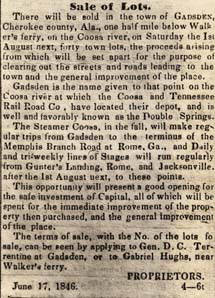 Double Springs was transformed on July 4, 1845, when one Captain James Lafferty piloted the first steamboat to this area, aptly named the Coosa. Lafferty landed near the site of the later Memorial Bridge. The Hughes brothers offered to name the town “Lafferty’s Landing” in his honor, but Lafferty declined. Instead, the name “Gadsden” was chosen, in honor of Colonel James Gadsden of South Carolina, who later became prominent for the Gadsden Purchase. Gadsden was a part of Cherokee County, Alabama until Etowah County was formed.
Double Springs was transformed on July 4, 1845, when one Captain James Lafferty piloted the first steamboat to this area, aptly named the Coosa. Lafferty landed near the site of the later Memorial Bridge. The Hughes brothers offered to name the town “Lafferty’s Landing” in his honor, but Lafferty declined. Instead, the name “Gadsden” was chosen, in honor of Colonel James Gadsden of South Carolina, who later became prominent for the Gadsden Purchase. Gadsden was a part of Cherokee County, Alabama until Etowah County was formed.
Lafferty’s Landing in Gadsden today – A 1,000-foot boardwalk with benches, gazebos, & picnic areas lining the walk.
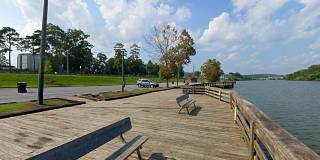 The county was formed in 1867, and Gadsden was soon after chosen as the county seat. Among the earlier settlers were the Turrentine, Walker, Hughes, McMichael, Lafferty, Lay, Sansom, Hollingsworth, Woodliff, and Moragne families. The courthouse was built in 1870, the jail in 1874. Daniel Turrentine, of Georgia, came in 1845, and built the first house on the land now embraced in the corporate limits. He was the first merchant and tavern-keeper.
The county was formed in 1867, and Gadsden was soon after chosen as the county seat. Among the earlier settlers were the Turrentine, Walker, Hughes, McMichael, Lafferty, Lay, Sansom, Hollingsworth, Woodliff, and Moragne families. The courthouse was built in 1870, the jail in 1874. Daniel Turrentine, of Georgia, came in 1845, and built the first house on the land now embraced in the corporate limits. He was the first merchant and tavern-keeper.
Books make great Christmas gifts – Check out these Alabama books by Donna R Causey
Gadsden, Courthouse Saturday afternoon in 1940, by John Vachon Photographer – Library of Congress
Gadsden, Courthouse Saturday afternoon in 1940, by John Vachon Photographer – Library of Congress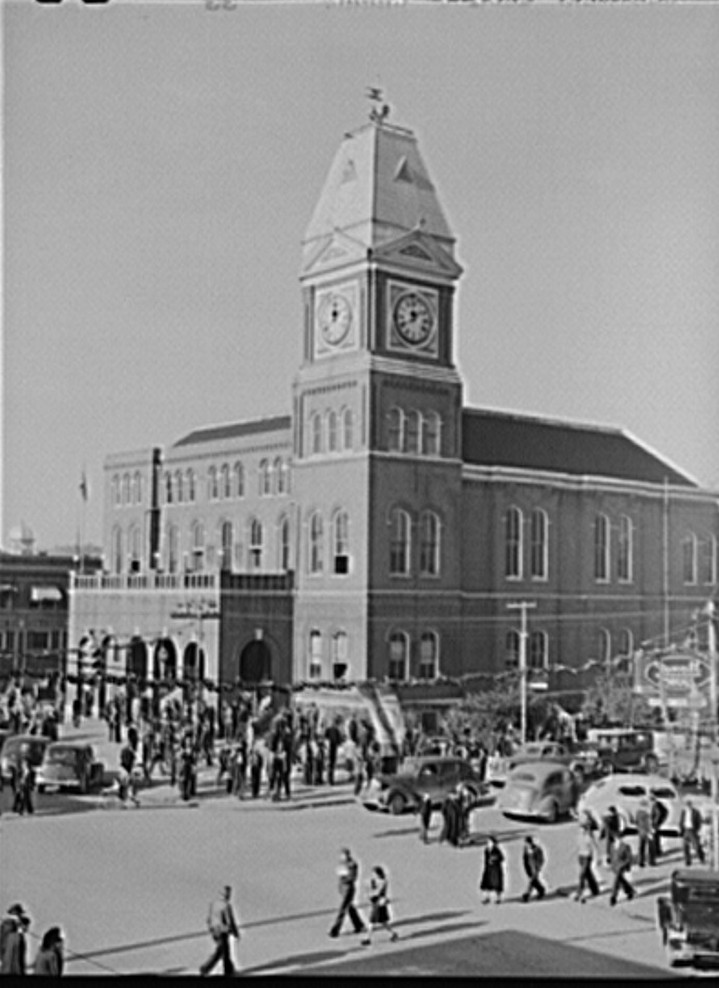
In the 19th century, Gadsden was the second most important center of commerce and industry, trailing only the seaport of Mobile. Gadsden was an important shipping center known for its riverboats. Gadsden is located on the west bank of the Coosa River, 5 miles east of Attalla, 2 1/2 miles east of Alabama City, 52 miles southwest of Rome, Georgia., 69 miles north of Birmingham, 92 miles south of Chattanooga, and 190 miles west of Atlanta, Georgia.
Gadsden is located on the west bank of the Coosa River, 5 miles east of Attalla, 2 1/2 miles east of Alabama City, 52 miles southwest of Rome, Georgia., 69 miles north of Birmingham, 92 miles south of Chattanooga, and 190 miles west of Atlanta, Georgia.
Coosa River Bridge in Gadsden, Alabama – The George F. Landegger Collection of Alabama Photographs in Carol M. Highsmith’s America, Library of Congress, Prints and Photographs Division.
 Gadsden is situated on a plateau at the southern extremity of Lookout Mountain, with Sand Mountain to the west. Red Mountain to the south, and the Colvin Mountains to the east. It was incorporated by the legislature, March 9, 1871, and a new charter was granted by act of January 27, 1883, which with amendments. Around 1900, it had a city hall and jail, which cost $35,000; incinerator, $4,000; public library, costing $22,000, 6 school buildings, costing $121,000, 24 miles sanitary sewerage, costing $120,000, fire department, partly volunteer, partly paid, and equipped with 2 combination chemical and hose motor trucks; privately owned gas and electric light systems, 100 miles of improved streets with 2 1/2 miles paved at a cost of $95,000, 30 miles paved sidewalks, costing $110,000, municipally owned waterworks constructed in 1908 at a cost of $250,000, 16 miles of electric street car lines, established from 1886 to 1913. Its bonded indebtedness was $510,000 maturing from 1931 to 1945.
Gadsden is situated on a plateau at the southern extremity of Lookout Mountain, with Sand Mountain to the west. Red Mountain to the south, and the Colvin Mountains to the east. It was incorporated by the legislature, March 9, 1871, and a new charter was granted by act of January 27, 1883, which with amendments. Around 1900, it had a city hall and jail, which cost $35,000; incinerator, $4,000; public library, costing $22,000, 6 school buildings, costing $121,000, 24 miles sanitary sewerage, costing $120,000, fire department, partly volunteer, partly paid, and equipped with 2 combination chemical and hose motor trucks; privately owned gas and electric light systems, 100 miles of improved streets with 2 1/2 miles paved at a cost of $95,000, 30 miles paved sidewalks, costing $110,000, municipally owned waterworks constructed in 1908 at a cost of $250,000, 16 miles of electric street car lines, established from 1886 to 1913. Its bonded indebtedness was $510,000 maturing from 1931 to 1945.
Crowd Christmas shopping on December 21, 1940 in Gadsden by photographer John Vachon – Library of Congress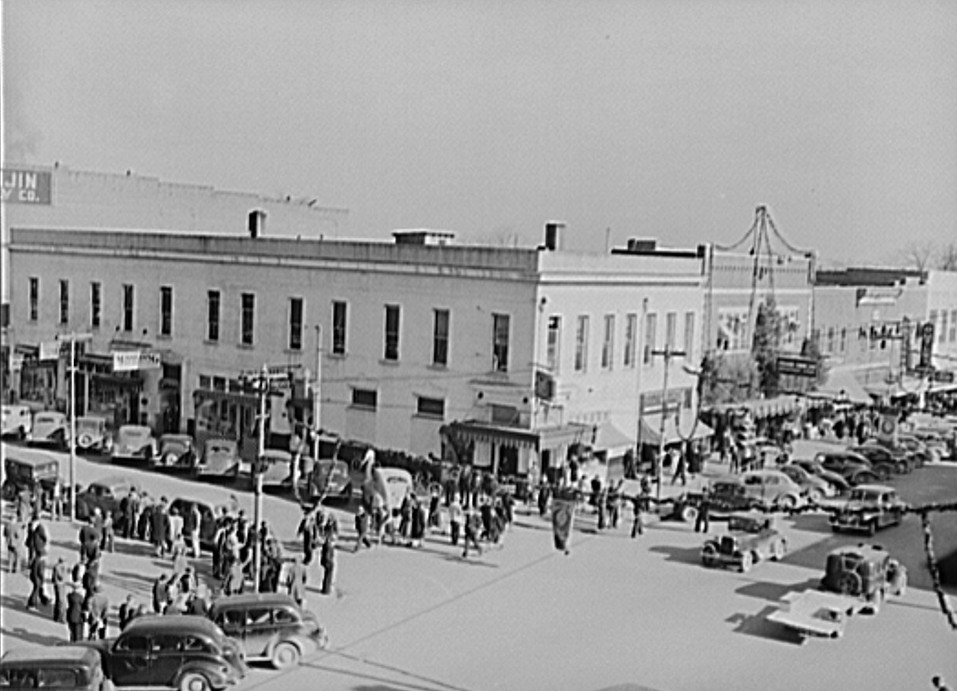
Crowd Christmas shopping on December 21, 1940 in Gadsden by photographer John Vachon
(Library of Congress)
Crowd Christmas shopping on December 21, 1940 in Gadsden by photographer John Vachon – Library of Congress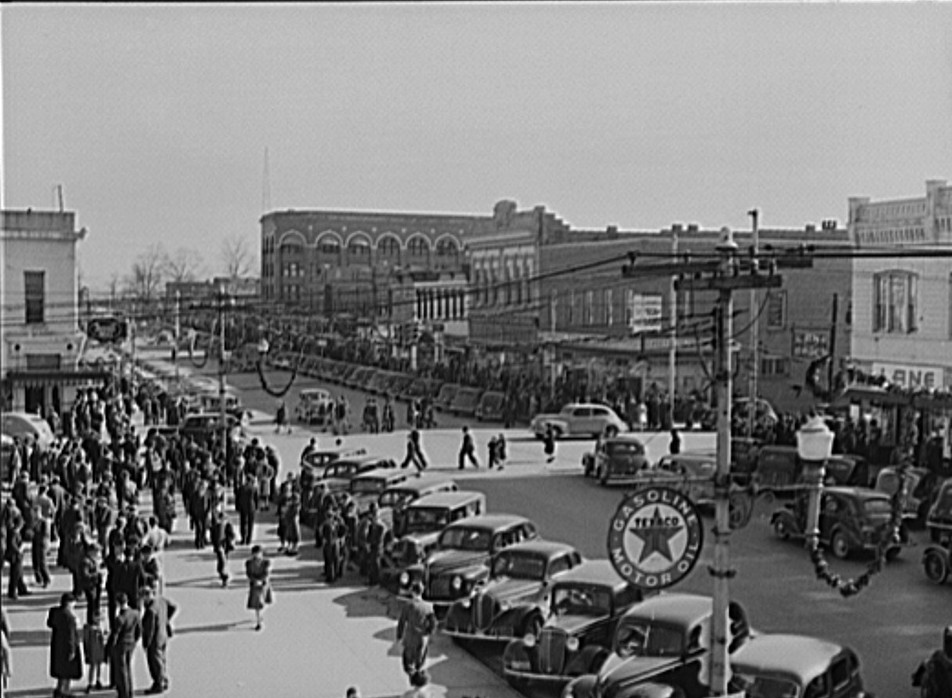
Its banking institutions included the First National, Gadsden National, Alabama Bank & Trust Co. (State), Etowah Trust & Savings Bank (State), and the Gadsden Loan & Trust Co. (State).
Crowd Christmas shopping on December 21, 1940 in Gadsden by photographer John Vachon – Library of Congress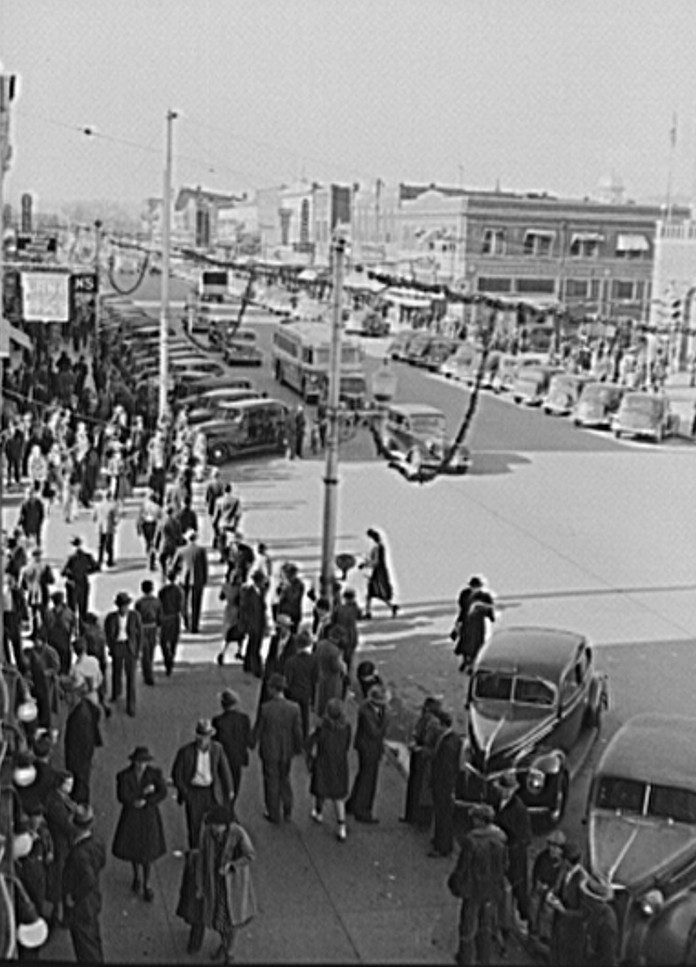
Crowd Christmas shopping on December 21, 1940 in Gadsden by photographer John Vachon – Library of Congress
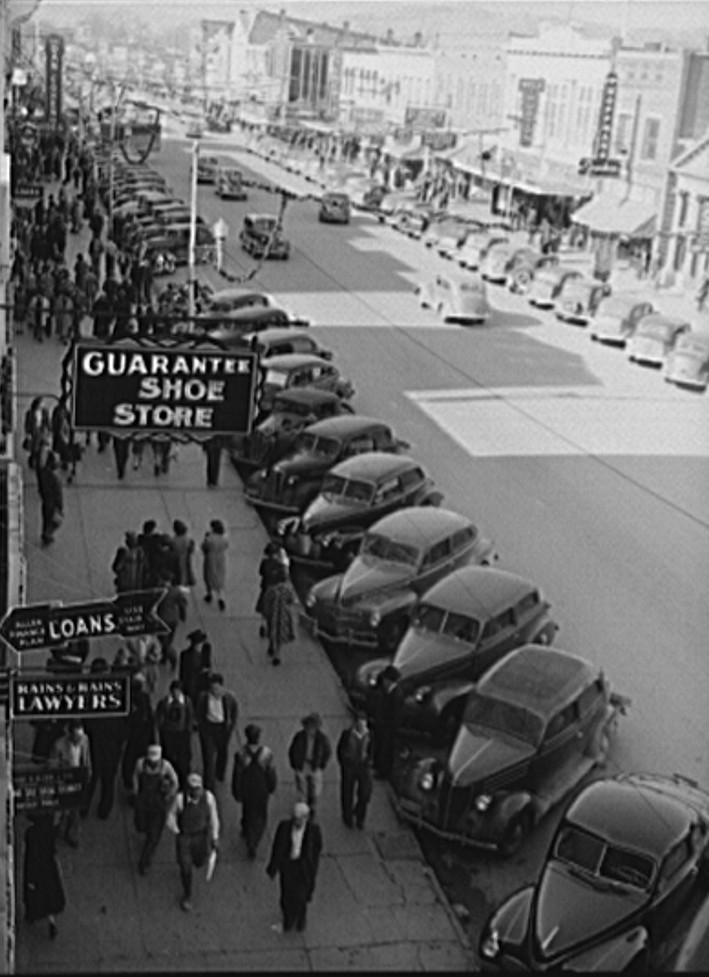 Newspapers were the Times-News, an evening daily, except Sunday, established in 1867, the Evening Journal, an evening daily, except Sunday, established in 1900, both Democratic newspapers, and the Bulletin of the Alabama Educational Association, a quarterly established in 1913.
Newspapers were the Times-News, an evening daily, except Sunday, established in 1867, the Evening Journal, an evening daily, except Sunday, established in 1900, both Democratic newspapers, and the Bulletin of the Alabama Educational Association, a quarterly established in 1913.
Christmas shopping on December 21, 1940 in Gadsden by photographer John Vachon – Library of Congress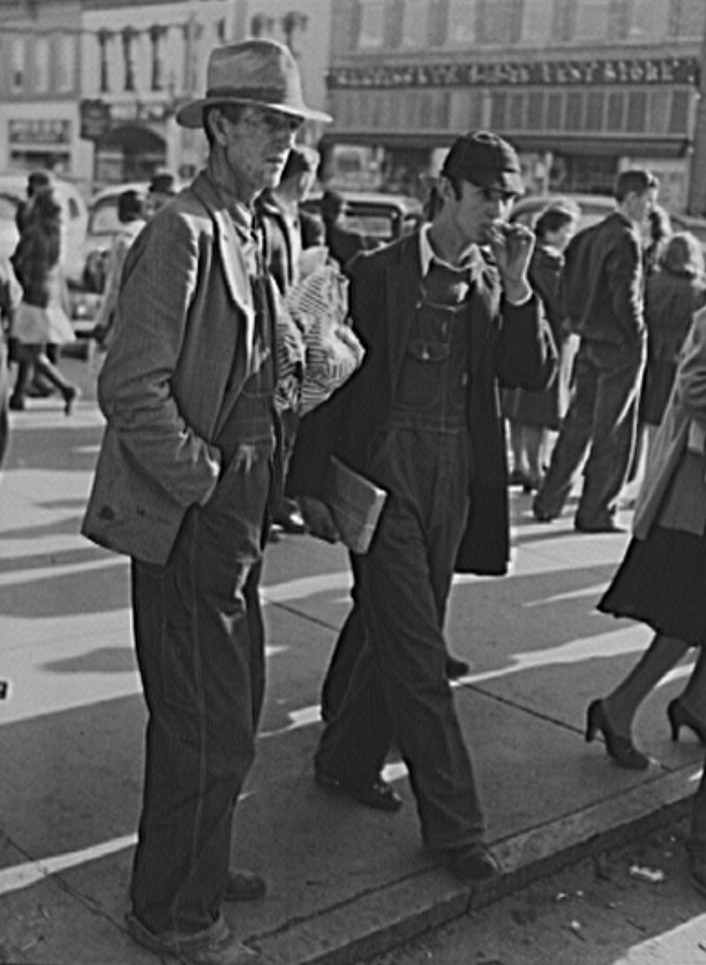
Gadsden’s industries around 1900 included a car works, the Southern Lumber Co., 3 pipe works, stove and hollow-ware factory, an iron furnace, cooperage works, electric railway system, an ice factory, a brick kiln, an overalls factory, cotton ginneries, gristmill, 3 fertilizer plants, a flour mill, machine shop and carriage works, marble and stone works, concrete works, a steam laundry, a mattress and comfort manufactory, 3 warehouses, and 5 iron ore mines in the immediate vicinity.
Company houses near cotton mill. Gadsden, Alabama December 1940 by photographer John Vachon (Library of Congress)
Vestibule of Baptist church during Sunday services. Hats belonging to steel and cotton mill workers. Gadsden, Alabama, Dec. 21, 1940 by photographer John Vachon (Library of Congress)
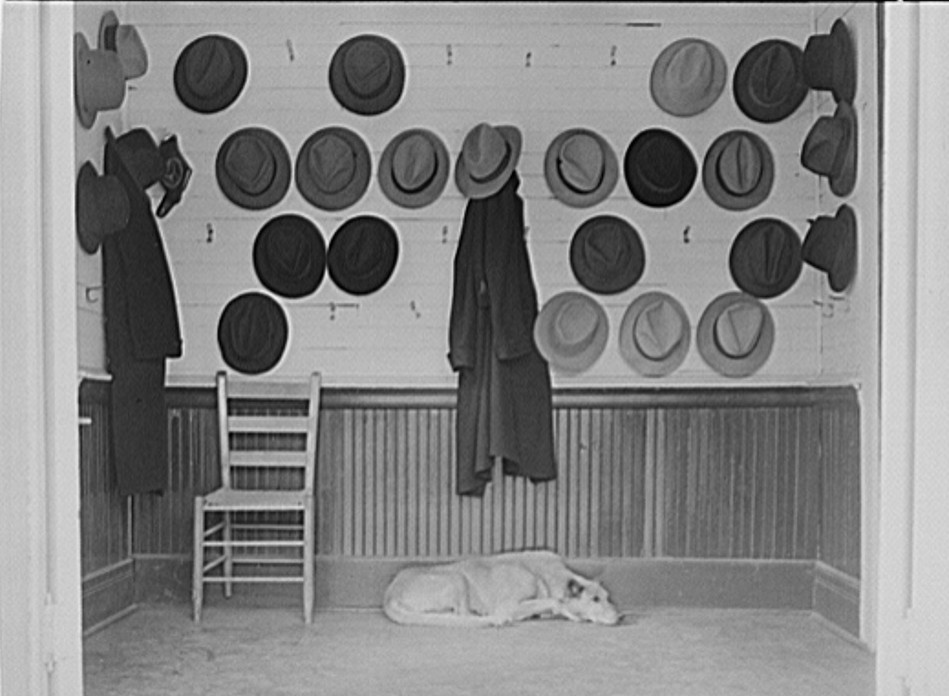 Its churches were the First Methodist, McTier Memorial Methodist Episcopal, South, First Baptist, Second Baptist, First Presbyterian, Cumberland Presbyterian, Christian, Episcopal, Catholic, and 8 negro churches. It also had a Masonic hall, an Odd Fellows hall, Knights of Pythias hall, and a T. M. C. A. building. There was also a Federal post office building.
Its churches were the First Methodist, McTier Memorial Methodist Episcopal, South, First Baptist, Second Baptist, First Presbyterian, Cumberland Presbyterian, Christian, Episcopal, Catholic, and 8 negro churches. It also had a Masonic hall, an Odd Fellows hall, Knights of Pythias hall, and a T. M. C. A. building. There was also a Federal post office building.
U.S. Post Office (ca. 1915) Completed in 1910. Supervising Architect: James Knox Taylor First extension completed in 1915. Supervising Architect of first extension: Oscar Wenderoth Still in use by the U.S. District Court for the Northern District of Alabama; the U.S. Circuit Court for the Northern District of Alabama met here until that court was abolished in 1912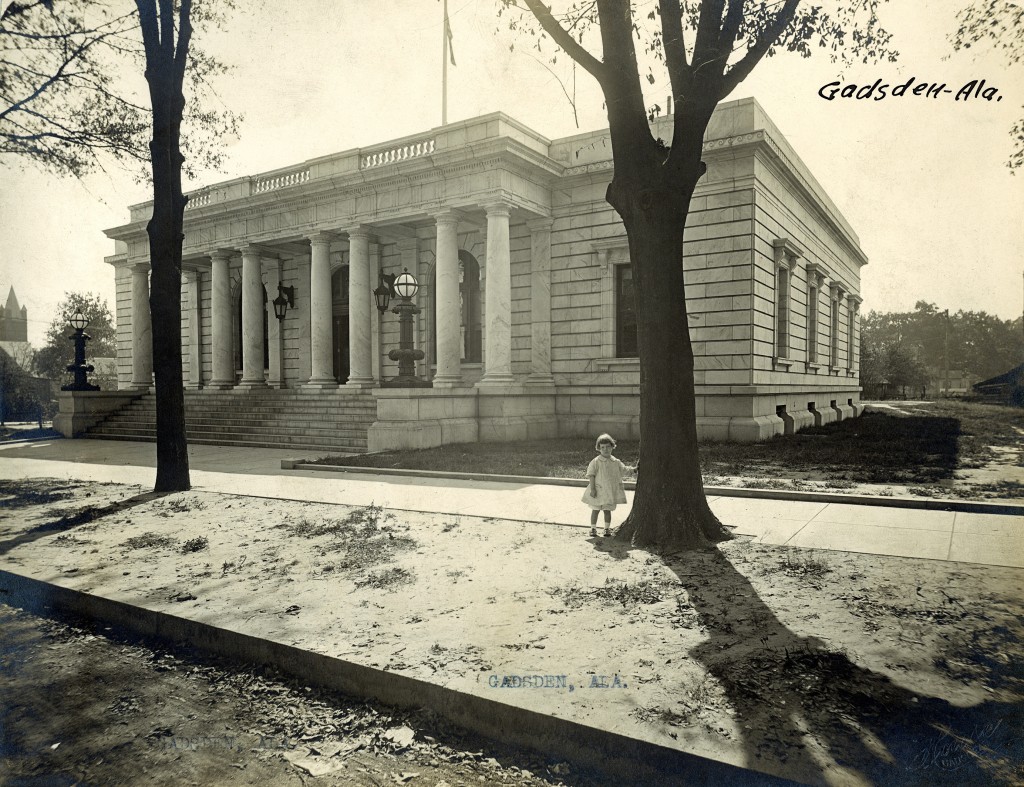
Two photographs of Historic downtown Gadsden, Alabama by photographer Carolyn Highsmith 2010 (Library of Congress)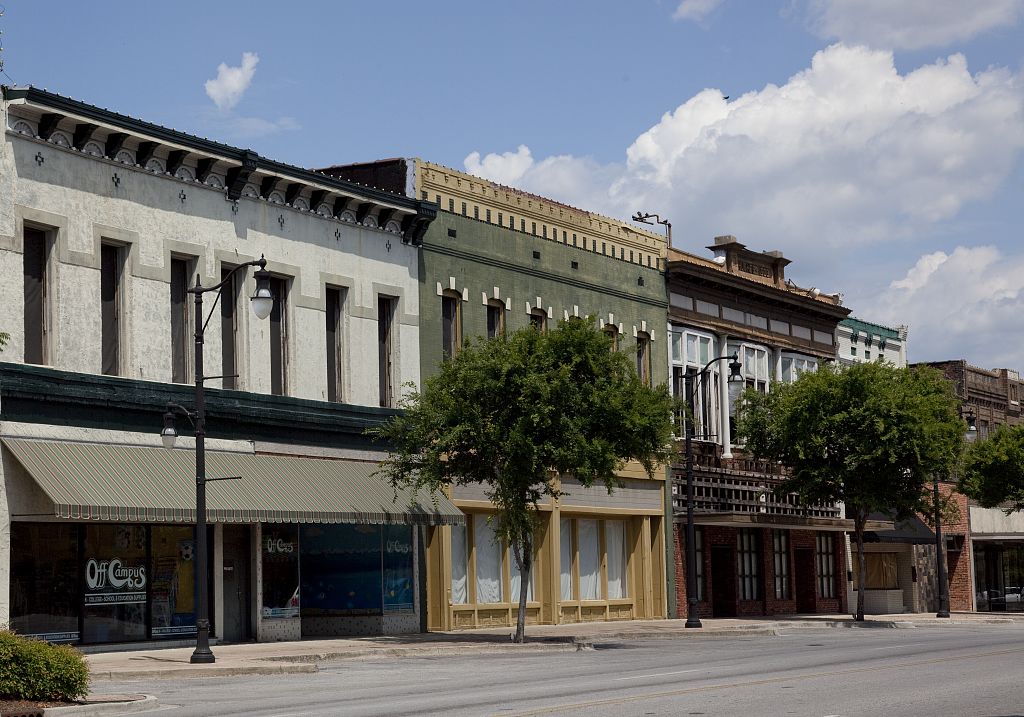
SOURCES
- Acts, 1870-71, pp. 130-137;IArmes,
- Story of coal and iron in Alabama (1910);
- Northern Alabama (1888), pp. 137-140; and
- Age-Herald, Birmingham, Ala., October 10, 1915
- A study of the Origins of Gadsden – James Lawrence
- Gadsden-Etowah Tourism


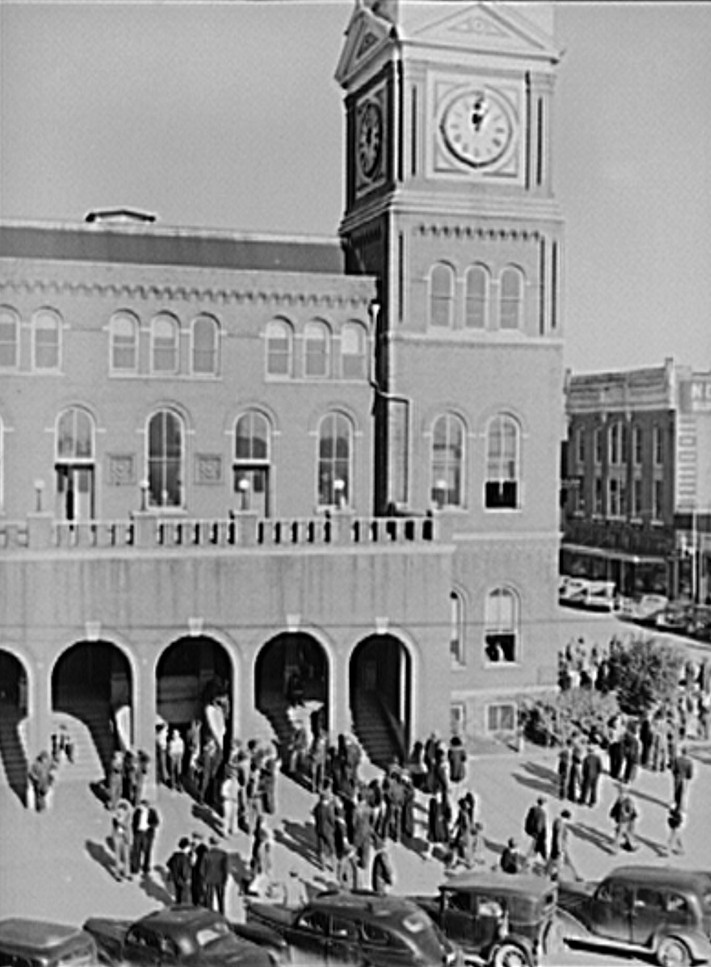
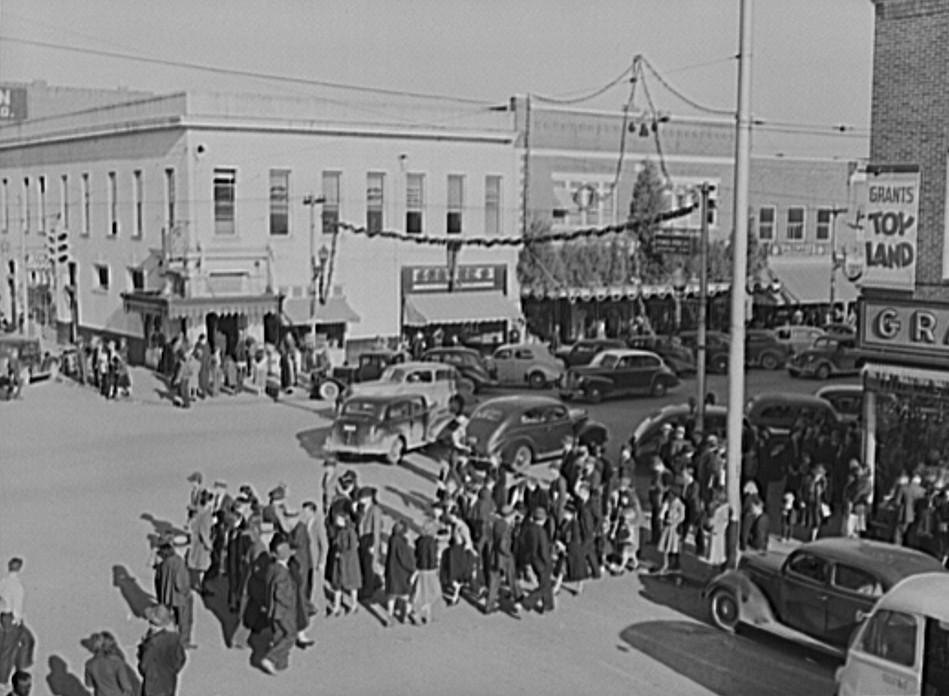
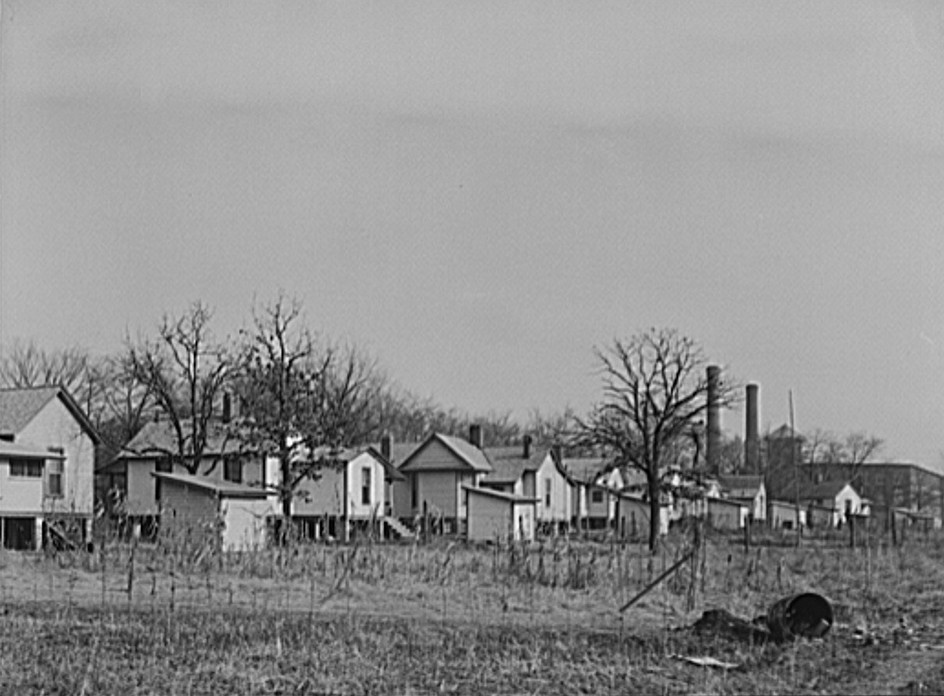
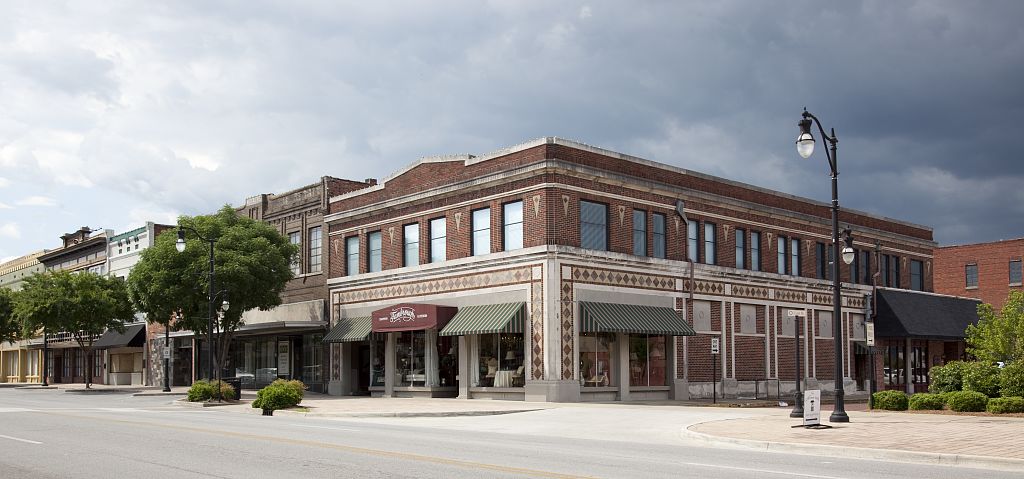
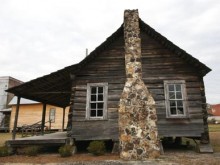
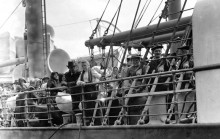
Did the Winston Co. town of Double Springs exist at the same time as this settlement?
Double Springs in Winston County was inhabited by Native Americans and the trail through there where they could get water from the springs was on a network that reached from South America to the coasts of the Gulf and the Atlantic and to the Mississippi up to the Ohio settlements.
Very interesting….. 🙂
Great article
In your second sentence the word Caucasian should also be capitalized. There are several other examples of a similar nature. Hidden agenda right out in the open?
Thank you for the correction. No hidden agenda, just a typo. I cut and paste a lot from very old historic books and I’ve discovered that there is no rhyme or reason to how words are capitalized, spelled or grammar rules in old historic accounts. I believe everyone came up with their own grammar rules in the old days, including the way words were spelled and when to capitalize. Sometimes I do not catch them before they make their way to the website. I’m the only one uploading to the site and some nights are longer than others.
Donna
cool
Neat but there is a Double Springs Alabama in Winston County!
True. There are many towns and cities in Alabama with the same name. It’s confusing at times sorting them out.
There are dozens of double springs but most are just areas now and the towns are all but gone. I was in Jennifer, AL south of Coldwater on Wednesday. The old school is now the location for the alumni association. 202 south until it becomes Priebes Road then right at the dead end.
LaWanda Kaye Cargile Bowen
Thank you Alicia Kǝllǝy
Thanks for the efforts!
Gadsden was chosen to honor Col James Gadsden because he was the president of the South Carolina Railroad Company. They were hoping to lure him into running the line from Atlanta, thru Gadsden, and then to the Mississippi River. Obviously, it didn’t work. The line went to Chatanooga instead. Both cities were comparable, economically, and industrially. It didn’t take long for Chatanooga to Gadsden behind.
*leave Gadsden behind. Oops typing this from my phone.
Another very interesting fact.. Did you know that the first city in the Country to be powered by hydro-electricity was Attalla? Alabama Power was conceived on Big Will’s creek, right off of Duck Springs Rd.
thank you for digging out the old settlers of the state. This was a great read and enjoyed it very much. I grew up in Frog Level, now know as Fayette, Al. Now live in Leeds, Al. And it has a history of its own, and was a stage coach route, and stop. According to history, the famous Steel Driving man, John Henry stay in Leeds to help build the railroad through the mountain. Navy retired.
This was a great read. Navy retired.
Interesting read. Notice the ladies Christmas shopping. No pants or jeans whatsoever.
Thank you so much for including my video in this history lesson. It is an honor to have it posted here.
Thank you for making the video. I know it brought back many memories to people from Gadsden.
Thank you for contrbuting. This is so interesting to learn more of home..wish we had learned more about Gadsden when we were in school. Never too late to learn. Thanks
Linda
Free State of Winston has a town called Double Springs, in fact it’s the county seat.
Nice story but the picture is not of gadsden
This is a great article.
Founded as an integrated community? Wow.
I didn’t realize there was a cotton mill in Gadsden. I knew about the steel mill because my uncles either worked there or at Goodyear. Of course, 1940 was before my time.
Donna Grimes Mahieux sat over in Alabama City on what is now 431. Alabama City is where I grew up
Very interesting material and pictures. Thanks for posting them.
I enjoyed pictures and story. Scary because I recognized so many “old” buildings in video.
Grandparents were from Gadsden and work in laundry, then moved to central park to start their own drycleaners.
interesting.
I appreciate, cause I found exactly what I was taking a look
for. You’ve ended my four day lengthy hunt! God Bless you man.
Have a great day. Bye
Very nice!
I remember when Roanoke Al looked like this.
great video of the old days